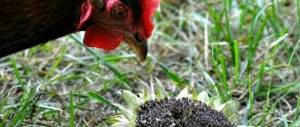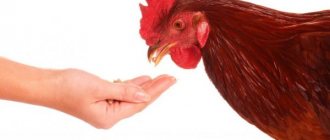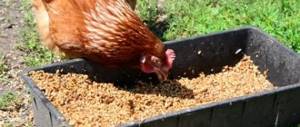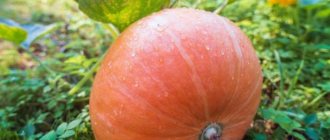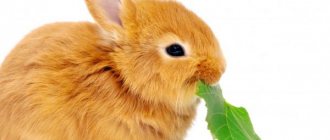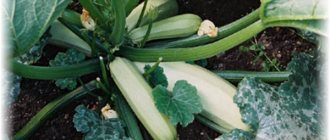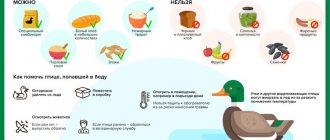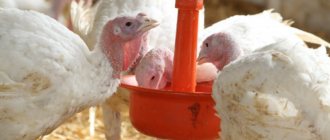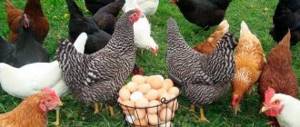How to feed laying hens at home?
Domestic chickens are rightfully considered one of the most picky birds. They willingly eat everything that is offered: grain, waste from the human table, weeds from the beds and the remains of feed received by pigs, sheep and goats. But it is unlikely that with such a “random” diet one can achieve high productivity. Without receiving all the nutrients, vitamins and minerals, chickens will not be able to lay eggs at full strength, and the formation of eggs will come at the expense of the bird’s body and its health.
How to organize feeding laying hens at home and choose a balanced diet for them?
In the natural environment, the wild ancestors of the chicken and its closest relatives eat a very varied diet. The menu of such birds includes grain, berries and fruits, seeds and herbs, larvae and adult insects. Birds from the order Galina do not disdain non-poisonous reptiles, for example, frogs and lizards. They hunt for earthworms and eat leaves from low-growing branches. Feeding laying hens at home cannot be so varied, but giving your pets everything they need for growth, development and good egg production is extremely important.
Feeding laying hens flaxseeds
Beneficial features
At all times, flax seeds have been used as a medicine. This plant can bring a lot of benefits to humans - in ancient times it was even used to treat infertility. Today, the seeds of this plant are used in traditional and alternative medicine as a powerful stimulant. But, this product is useful not only for humans, but also for chickens.
- The seeds contain a large amount of lignins, which are responsible for the health of the hormonal system. This substance is useful for chickens of all ages because it normalizes egg laying and prevents the development of diseases associated with the reproductive system. This is an excellent supplement that helps normalize hormonal levels.
- The seed also contains several fatty acids that are important for the functioning of the immune system and the general condition of the body. Due to these substances, it is possible to increase the duration of the productive period and improve the functioning of all organs and systems.
- This supplement also contains protein, which has a special structure and is very quickly absorbed by the body.
- Alpha-linoleic acid is a substance that prevents the development of tumors, stimulates feather growth and strengthens the immune system.
Composition of feed for laying hens at home
In addition to various types of grain, which makes up about 60% of the menu, chickens are given plant and animal feeds that supply the birds with protein, fats and carbohydrates. If necessary, vitamin supplements are administered and minerals are always offered.
Which grains to choose to create the healthiest mixtures? Since grain should predominate in the composition of the feed, it is necessary to clarify which types of grains are best suited for laying hens, and how best to feed them.
Almost all grain crops are easily digested by birds, supplying the body with carbohydrates, fiber and vitamins. When deciding what to feed laying hens so that they lay eggs better, the poultry farmer should think about introducing poultry into the diet:
- corn rich in carbohydrates, and its grain is pre-crushed so that the feed is absorbed more fully and better;
- wheat, which stands out from other cereals due to its abundance of vitamins B and E, plant proteins, especially in demand by laying hens;
- wheat bran, even superior to whole grain in nutritional value for laying hens;
- barley, useful for chickens of meat and meat-egg breeds;
- fiber-rich oats, which for better digestion must be crushed and steamed, otherwise its unrefined grain irritates the esophagus and intestines of chickens;
- oat bran, which is an excellent substitute for grain and can account for up to 20% of the volume of cereals in the menu;
- rye and millet;
- buckwheat, which should be no more than 10% of the feeding norm for laying hens at home.
But even the most balanced cereal mixtures do not have enough protein, calcium, especially necessary for laying hens, phosphorus and some important vitamins, so other components must be included in the menu.
A useful additive in the diet of laying hens will be:
- flax and sunflower seeds;
- legumes;
- Cake and meal rich in protein and fiber.
The menu must include mineral supplements that are unacceptable for the human diet, but birds simply cannot do without them. These are chalk, crushed shells, fine gravel, ash, and table salt. The listed feed components are not included in the feed for laying hens, but are given separately.
Linen. The plant can be dangerous for animals. Who can you feed flax?
MiscellaneousWho can be fed flax
Hello, dear readers! Today we’ll talk about feeding laying hens with flaxseeds. At all times, poultry farmers have thought about the issue of improving the productive qualities of laying hens. Thanks to this, many ways and means have appeared to improve egg production.
But not all modern methods and means that can enhance egg laying are safe for birds. Therefore, today we will look at a natural remedy that is a good addition to the diet and improves the performance of the club. So, we will talk about flaxseed.
articles:
Beneficial features
At all times, flax seeds have been used as a medicine. This plant can bring a lot of benefits to humans - in ancient times it was even used to treat infertility. Today, the seeds of this plant are used in traditional and alternative medicine as a powerful stimulant. But, this product is useful not only for humans, but also for chickens.
- The seeds contain a large amount of lignins, which are responsible for the health of the hormonal system. This substance is useful for chickens of all ages because it normalizes egg laying and prevents the development of diseases associated with the reproductive system. This is an excellent supplement that helps normalize hormonal levels.
- The seed also contains several fatty acids that are important for the functioning of the immune system and the general condition of the body. Due to these substances, it is possible to increase the duration of the productive period and improve the functioning of all organs and systems.
- This supplement also contains protein, which has a special structure and is very quickly absorbed by the body.
- Alpha-linoleic acid is a substance that prevents the development of tumors, stimulates feather growth and strengthens the immune system.
5 reasons why you should feed your chickens flax seed
- Instead of using premixes and hormonal stimulants, you can improve egg production while improving the health of your laying hens. It is safe and most effective.
- During the period of molting and growth of new feathers, flax seeds will help the blackbills to quickly recover and return to a normal lifestyle.
- The use of this natural remedy improves the incubation qualities of the testicles, and also affects their weight and composition. Promotes healthy development of the embryo and good survival of the offspring.
- The product can improve appetite and affect the activity level of the herd.
- In addition, seeds are a good prophylactic that can prevent many diseases.
How and in what quantity to feed chickens?
It is advisable to give this nutritional supplement daily - this is a guarantee of effectiveness. You can use whole seeds, or purchase them in the form of flour. Feeding laying hens flaxseeds in the form of flour is very convenient - it can be added to the mash, 10 grams per head. If you use whole seed, then give no more than 10-15 pieces to 1 chicken.
Precautionary measures
It is worth considering that this product has a very strong effect and, if consumed in moderation, can have the opposite effect. Excessive consumption of the supplement is fraught with the development of obesity, impaired egg production, and deterioration of health. Therefore, it is not recommended to exceed the feeding norm.
For broilers and meat breeds, larger amounts of this additive can be used. Today, they even produce special combined feeds that stimulate growth and improve the taste of meat.
About 10% of such feeds contain flaxseed cake. But, egg-laying breeds can suffer from large amounts of additives in the diet.
Use during molting period
Many oilseeds can be useful during this difficult period. When chickens molt, most of the beneficial substances they receive from food are used by the body to quickly restore plumage.
This is the only period when you can exceed the recommended dosage in order to enhance feather growth and strengthen the weakened health of the birds.
Counteracting constipation
Problems with intestinal motility most often occur with those chickens that eat dry food. In addition, constipation can be caused by many other reasons. The ideal cure for this disorder is a decoction of flax seeds. Based on this decoction, you can prepare a wet mash.
In addition, it is recommended to enrich your diet with vegetables that contain large quantities of fiber. The advantage of this additive is that it does not lose its beneficial properties even after heat treatment, but you should not boil the seeds for a long time. It is better to crush them first, then the broth will contain much more valuable components.
As you can see, feeding laying hens with flaxseeds has a very beneficial effect on the health, well-being and productivity of birds. The main thing is to remember precautions and dose the nutritional component correctly. This is all!
If you find this material interesting and useful, share the article with your friends from social networks.
Don’t miss important publications on the site - by subscribing to updates you will be the first to receive information about new products.
All the best!
Source: https://xn--c1adanacpmdicbu3a0c.xn--p1ai/raznoe/kogo-mozhno-kormit-lnom.html
What grass can be given to laying hens?
Green feed is indispensable when keeping laying hens. This is an excellent source of minerals, fiber, moisture, and vitamins. When walking independently, chickens eat plenty of pastured greens. When feeding concentrates, about 20% of the feeding norm for laying hens at home should be greens.
Livestock kept in cages are given fresh and dried meadow grass. Chickens respond well to feed containing clover, alfalfa and other legumes.
What kind of grass can be given to laying hens from garden beds? Among the cultivated plants grown in vegetable gardens in the middle zone, chickens can be offered dill, young peas, lettuce leaves and many other plants that do not irritate the bird’s digestive tract.
Among the weeds, the leader in terms of benefits is stinging nettle. It is a reliable source of ascorbic acid, vitamins A, B, K, as well as fiber, microelements and moisture. In winter, when there is no fresh grass, the birds are offered grass hay.
What to feed laying hens to help them lay eggs better in the cold season? Here you should not forget about pine needles; pine and spruce needles accumulate the maximum amount of vitamin C and carotene in the middle of winter.
Owners of vegetable gardens can supplement the diet of their laying hens with root vegetables. This component in a complex poultry menu is convenient because many types of tubers and root vegetables are perfectly stored and are available both in summer and winter.
Before feeding laying hens, pullets and adults, beets, carrots, turnips, and summer varieties of radishes are grated. Among garden root vegetables, carrots are especially useful, containing carotene and having a beneficial effect on egg quality and egg production of laying hens. This vegetable can be given raw or dried, adjusting the consumption rate.
Composition of feed for laying hens
Due to the ease of preparation and availability of products, many poultry house owners mix the feed themselves. Grain mixtures are solid foods, while soft or wet ones include mash based on steamed cereals, vegetables and herbs, bran and flour additives.
Knowing what foods a bird needs to consume to increase egg production and maintain the body in good condition, it is important to understand how to feed laying hens at home and maintain optimal proportions. Ready-made and homemade mixtures for chickens include all of the listed categories of feed, but they must also include sources of animal protein. These include:
- dairy products;
- meat and bone and fish meal, as well as meat and fish waste;
- earthworms.
Before preparing mash for laying hens, the poultry farmer must decide on its composition and quantity. Individual products should be prepared before serving:
- potato tubers and raw peels are boiled, chilled and kneaded;
- vegetables and root vegetables are chopped using a grater;
- meat and fish are heat treated and cooled;
- The beans are boiled, and the remaining legumes are pre-soaked.
Before feeding pullets to laying hens, the grain is crushed or flattened. In winter, it is useful to germinate cereals, which significantly increases their nutritional and vitamin value. The same effect is achieved by adding 5–10 grams of yeast per kilogram of mixture.
Feeding standards for laying hens
Almost omnivorous chickens can search for food almost constantly, but excess nutrition does not have the best effect on the well-being of the bird and the number of eggs it lays.
Therefore, giving chickens a strictly defined amount of feed and following a feeding schedule is very important.
An approximate daily diet for laying hens of egg lines should consist of the following components:
- cereal grains - 45 g (in winter - 55 g);
- mealy feed - 20 g;
- pulses - 5 g;
- animal feed - 5 g;
- meal, cake, yeast - 7 g (in winter - 6 g);
- greens, root tubers - 55 g (in winter - 20 g);
- grass, hay, pine flour - 5 g (in winter).
For laying hens of meat lines, the composition of the approximate daily ration does not differ, but the amount of some components increases:
- cereal grains - 50 g (in winter - 60 g);
- mealy food - 25 g (in winter - 20 g);
- grain legumes - 5 g (in winter - 6 g);
- animal feed - 6 g;
- meal, cake, yeast - 8 g (in winter - 7 g);
- greens, root and tuber crops - 60 g (in winter - 20 g);
- grass, hay, pine flour - 10 g (in winter).
Based on the weight of the bird, you can calculate the amount of feed that needs to be given to it. This is done on the basis that with an egg production of 100 eggs and a laying hen weighing 1800 g, the amount of feed should be 125 grams.
It should be divided in equal parts by the number of meals per day. For every additional 100 grams of weight, 5 grams of feed should be added to the daily diet.
For a chicken that produces 130 eggs, you need to increase the daily amount of feed by 5 grams from the norm. For a laying hen producing 160 eggs per year, you need to add 10 grams of feed.
The feeding regime for laying hens can be varied by the poultry farmer himself, focusing on the well-being of the chickens, breed characteristics, and the nuances of keeping them. On average, to maintain the productivity of laying hens, poultry feed is given 2-3 times a day.
Feeding standards for laying hens at home
Chickens are practically omnivorous and can search for food almost all the time, but excess nutrition does not have the best effect on the bird’s well-being and the number of eggs it lays. Therefore, it is important to follow a feeding regime and give chickens a strictly defined amount of feed.
How many times a day should laying hens be fed, and what are the accepted intake rates? To maintain the productivity of the egg population, birds are given feed 2-3 times a day. The poultry farmer himself can vary this number, focusing on the breed characteristics, nuances of keeping and the well-being of the chickens.
For 100 grams of grain mixture for feeding laying hens at home, add half a gram of salt and mineral feed. Additionally, greens or hay, vegetables and root vegetables, and components of animal origin are introduced.
There are many recipes on how to make compound feed for laying hens with your own hands. In a personal backyard, various products that are at hand can be used. Seasonal restrictions also have a significant impact on the composition of the product. Therefore, in the summer, the main emphasis is on greens, but in the winter, when they are not available, hay and a larger amount of stored vegetables and root vegetables are introduced into the diet.
Experienced poultry farmers know which types of feed are interchangeable. This helps, without loss of nutritional and energy properties, to make combined feeds from what is currently on the farm.
Keeping and feeding laying hens
Regarding feeding pets, the following must be said. The ingested food partially softens in the crop, where it remains for some time. Chicken crop
is like an extension of the esophagus. In the mucous membrane of the goiter walls there are glands that secrete a special liquid that wets swallowed food. Soft food remains in the crop of chickens for about 5 hours, and solid grain food for 12 to 20 hours.
Chicken goiter
capable of contracting and expanding.
From the crop, softened food enters the glandular stomach
, where it mixes with digestive juices secreted from the glands located in the mucous membrane of the stomach.
The glandular stomach of a chicken
is small in size, much smaller than the goiter and represents, as it were, an expansion of the esophagus before it passes into the “muscular stomach”.
Muscular stomach
consists of two thick and strong muscles, which are bluish-red in color when cut.
The inside of the muscular stomach is covered with a special dense horn-like membrane. Its density is such that it is not injured by sharp pebbles, glass shards, etc., swallowed by a chicken .
The muscular stomach of a chicken acts as teeth. The extremely strong muscles of this stomach crush and grind food, which first swollen in the crop and mixed in the glandular stomach with digestive juices, into a liquid pulp. Pebbles swallowed by the chicken with food help grind the food, gradually grind themselves and partly leave the intestines with feces.
The chicken feels a strong need for new pebbles, and if she is not given them for a long time, she greedily pounces on them. Chicken intestines
not particularly long, only four times longer than the body, but since the intestinal mucosa has a lot of folds, the absorption of digested food occurs very quickly.
This is why the chicken is able to process large amounts of feed into eggs and meat .
A chicken has 2 cecums; they extend close to the beginning of the rectum. The rectum opens into the cloaca, i.e. expansion of the rectum. The cloaca also contains ureters, which is why urine and feces are released simultaneously in birds. The egg-wire also opens into the cloaca.
The best food for chickens to lay eggs well,
is a variety of grain material.
But you can’t keep chickens on grain feed alone, if you want to get enough eggs from them. Then, growing chickens also cannot limit themselves to grain feed alone.
They should be given, in addition to grain, eggs, cottage cheese; worms, meat meal, etc., i.e. feed rich in protein necessary for successful growth. In order for eggs to form in the chicken’s body, protein is also needed, which it must receive in food. There is protein in grain feed, but there is little of it, and in order to satisfy the need for protein, the chicken would have to eat so much grain a day that she would not be able to digest it. That is why it is important to make up a daily supply of a variety of feeds.
If grain and protein feed are available, green feed for chickens is also of great importance. In addition to its nutritional value, it keeps the stomach and intestines of chickens in good condition. Therefore, in winter, when there is no grass, chickens should be given succulent plant food such as raw rutabaga, turnips, beets, etc.
Finally, clean water for drinking, mineral feed (lime, shells, crushed bones, etc.) used for bone growth in young animals and for egg shells in laying hens, and then pebbles for grinding food in the stomach are inevitable and necessary for proper feeding of chickens . The same applies to other birds, geese, ducks, turkeys , etc.
What should you not feed laying hens?
The omnivorous nature of chickens sometimes leads to unpleasant consequences. The bird does not pay attention to the quality of food, pecking at rotten and moldy pieces. The result of avian greed and negligence of the owners manifests itself in the form of intestinal infections, goiter blockage, helminthic infestations and other diseases.
What foods are harmful to poultry? What should you not feed laying hens? The menu of chickens of any breed should not contain fermented, acidic feed or products with signs of obvious spoilage and mold. To avoid digestive problems, do not feed your bird whole root vegetables, raw potatoes or peelings. All waste from the table is checked and sorted before reaching the chickens. They should not contain any remnants of packaging film, foil, twine or other inedible items.
If the bird receives fresh grass and hay, it is important to make sure that they do not contain poisonous plants, for example, horsetail, celandine, and wormwood. It is these species that most often cause poisoning of laying hens in chicken coops and on paddocks.
Beginning poultry farmers ask whether it is possible to feed laying hens bread. If these are butter products, then despite all the nutritional value, they will only cause harm to the livestock. But you can give regular wheat or grain bread to birds. This supplement is especially useful in winter, when chickens need food that quickly replenishes energy reserves. It is better to introduce high-quality dried pieces into the diet, which are added to mash or given in a soaked form.
What to feed chickens in winter - video
Grain for feeding chickens
Grain is the main feed for poultry. It should make up at least half of the diet. For a bird's short digestive tract and high metabolic rate in its body, grain with its high concentration of nutrients is the most suitable food. However, the insufficient protein content in grain and its amino acid composition do not satisfy the needs of poultry for productive feed. Therefore, it is necessary to introduce protein concentrate into the diet as a supplement .
What should you not feed laying hens?
The unpretentiousness of birds in nutrition often provokes negative consequences in the form of intestinal infections, clogging of the crop, helminthic infestations and some other diseases.
You can avoid such unpleasant situations by excluding the following foods from the laying hen’s diet:
- white breads, pastries and loaves. Chickens are only allowed to be given black bread in the form of crackers. Before feeding, it should be soaked in water or milk;
- salted or fresh fish. It is allowed to feed chickens with boiled fish or fish waste mixed with the main feed;
- table beets. Eating this vegetable causes severe diarrhea in poultry;
- citrus fruits and their peels;
- tomato tops;
- poisonous plants: celandine, horsetail, wormwood;
- sweet and salty foods.
The chickens' diet should not contain fermented, acidic feed or spoiled or moldy foods. It is also prohibited to give whole root vegetables, raw potatoes and peelings.
Food waste that reaches birds should not contain pieces of cellophane packaging, foil, thread or other unsuitable items for food.
Biological value of flax
In terms of metabolic energy content, flax seed is superior to grains of legumes, cereals and oilseeds. Due to the combination of high energy nutritional value and a high content of useful organic elements, flax has a unique biological value.
The amino acid composition of the seed is similar to soy protein, therefore it is one of the best proteins of plant origin. Only it contains less lysine than soybeans; in terms of the composition of essential amino acids, it is close to chicken egg white.
The seeds do not contain anticoagulants, lipoxidase, urease, or proteolytic enzyme inhibitors, so the protein from it is widely used for feed and food purposes, for treatment and prevention.
Composition of flax
Meal and cake contain pectins, glycosides, and hydrocyanic acid. For young poultry, the recommended consumption rate is no more than three percent of the diet, for adults no more than six percent.
Experts working at VNITIP give recommendations not to feed broilers with flax and the products remaining after its processing. They contain from three to ten percent of mucous substances that are poorly digested by birds.
Breeding work is being carried out in the direction of reducing low-value nutrients, and varieties are being zoned. This allows you to get excellent results from using the plant in poultry farming.
The presence of several substances in rapeseed, as well as in meal and cake, limits the scope of its application. The meal has one of the highest arabino-xylan indices. Its value reaches 130.
Non-starchy polysaccharides have a negative effect on poultry; it is proposed to use preparations with enzymes to eliminate this negative effect.
The results of VNITIP research have proven the possibility of increasing up to 7% in the diet. An indispensable condition for this is the addition of an enzyme as an additive. The types of enzymes from various manufacturers can be found at the exhibition.
The urgency of the problem of using flax has given rise to many proposals. An enzyme mixture diluted with hot water is added to the feed in the form of mucus, which is absorbed by the bird almost in full.
The role of medicinal plants
The use of medicinal plants allows you to avoid expensive synthetic drugs, including antibiotics.
The use of flaxseeds in poultry farming gives a good therapeutic and preventive effect, and helps to avoid the appearance of substances harmful to humans in poultry products.
Medicinal plants are harvested for feeding poultry at a time when they contain the maximum amount of biologically valuable substances. From them preparations are made in the form of infusions, decoctions or powders, added to wet mixtures served at the beginning of the day.
Flax seeds are used not only for sowing and feeding poultry. They can be bought in pharmacies and stores. Special remedies are prepared from them to help cope with inflammatory processes in the gastrointestinal tract. Their effectiveness in treating respiratory problems has been proven.
You can learn more about technologies for using flaxseeds in poultry farming at the annual exhibition "Agroprodmash"!
